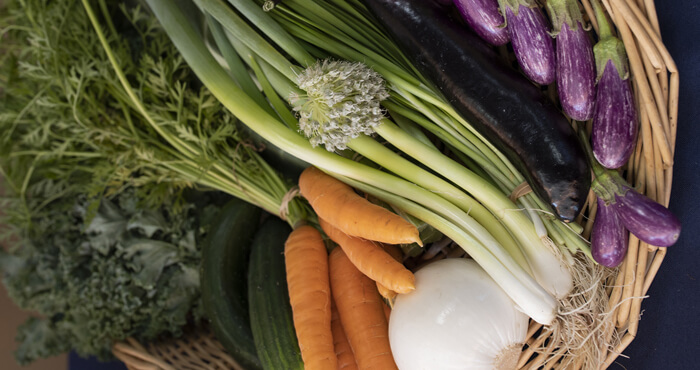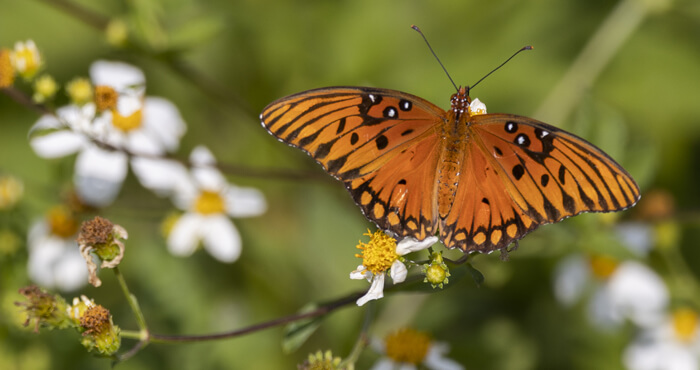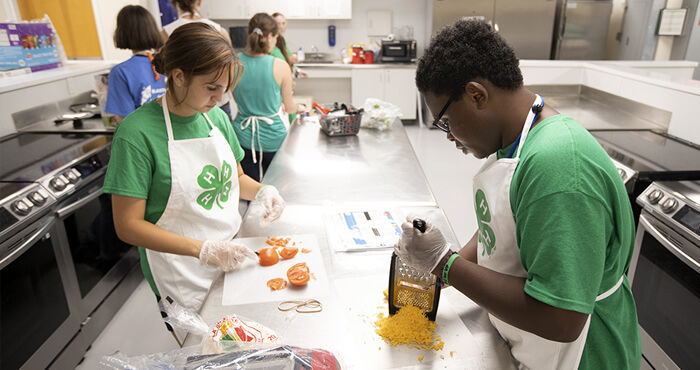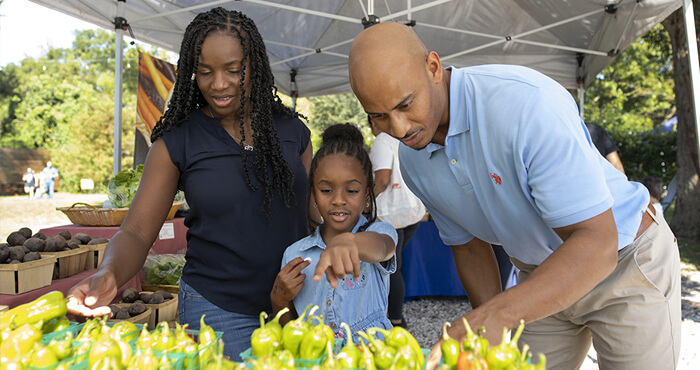
Toxic Plants
Weeds in natural areas can pose risks to animal health, especially to grazing species. But, animal owners and livestock managers who provide high quality feed, forage, or hay for good nutrition and performance, can keep their animals healthy and safe.
To prevent poisoning in your animals, provide proper feed and grazing, and identify and control poisonous plants in natural areas, pastures, and your own landscape.
Toxicity & Animals
Plants produce toxins as a defense against grazing. These toxins usually make the plants smell or taste bad, and animals generally avoid them.
But, young animals may eat these plants out of curiosity, and older animals may graze on these undesirable plants under the following conditions:
- Desired forage is scarce.
- Owners give them bad food or forage that contains poisonous plants.
Most poisonous plants will not kill an animal. Instead, animals will suffer from chronic toxicity, which is caused by repeat exposure over time. The common symptom seen in this type of poisoning is wasting (poor growth and low weight).
Some plants, however, will cause acute toxicity—one time, damaging exposure. Animals usually die soon after eating these plants. Luckily, this type of poisoning is rare.
Common Poisonous Plants
Many of the following plants are commonly seen in the landscape. For photos and identification tips, visit the Center for Aquatic and Invasive Plants database or view the presentation "Poisonous Plants in Pastures."
If you are unsure about the identity of a pasture plant, you can always have your county's UF/IFAS Extension agent confirm the plant specimen.
Azaleas
All parts are toxic. The toxins affect the stomach and intestines. Symptoms include nausea, weakness, salivating. Death is rare.
Bracken Fern
All parts are toxic, particularly the roots. In horses, the toxin causes vitamin B1 deficiency, which leads to a high fever and lack of coordination. In cows, the fern causes hemorrhaging with swelling and bloody waste as symptoms. Sheep and goats are less susceptible.
Poisoning usually occurs over multiple exposures, not all at once. Animals usually eat bracken fern during the summer when seeking shaded environments.
Cherry (Prunus sp.)
There are many different species of cherry and all are toxic. These plants are common around pastures since the seeds are easily spread by birds. Cherry produces cyanide in the leaves.
Cherry, Black
All parts are extremely toxic, but wilted leaves are the most toxic. The tree contains cyanide, and all animals are susceptible, especially ruminants. Symptoms included staggering or convulsions within 15–30 minutes of ingestion; death occurs within one hour.
Coffee Senna
All parts are toxic, but mainly the seeds. Wasting or dark brown urine are symptoms of poisoning; large quantities must be ingested for symptoms to appear. Poisoning is most common in the fall after frost since coffee senna will remain green after bahiagrass and bermudagrass go dormant.
Crotalaria (Rattlebox)
The whole plant is poisonous, the seeds in particular. Weakness, confusion, and jaundice from liver damage can occur. Animals may die months after eating crotalaria.
Hemlock
This plant has a high toxicity. It is often found along fence lines and stables.
Lantana
This ornamental is often grown in Florida gardens, but has escaped into natural areas. It can be found along fencerows and tree lines.
The whole plant is toxic. Large quantities cause acute toxicity, while smaller amounts cause mouth sores and skin cracking.
Nightshade
The berries are the main poisonous part of this plant, the leaves less so. Green berries are particularly toxic. Symptoms include acute toxicity, progressive unthriftiness (failure to put on weight), and gastric distress.
Nightshade is unpalatable to animals, so they will rarely eat enough to cause death.
Perilla Mint
The whole plant, especially the flowers, is toxic. Poisoning incidents are more common in the fall when the plant is flowering. Poisoning symptoms include labored breathing.
Perilla is usually found in shady areas around forest edges and farm buildings. It can be recognized by its mint-like odor.
Red Maple
Red maple can cause a blood disorder that leaves an animal sick for an extended period. Like cherry, wilted leaves are the most toxic.
Others
Other plants involved in reported poisonings or deaths of pets and livestock (including sheep and goats, poultry, rabbits, dogs, cats, cattle, and horses):
|
|
Poisoning Symptoms
Sometimes poisoning may not be immediately obvious, especially if you have not witnessed an animal grazing on a toxic plant. If you think your animal has been poisoned, look for the following symptoms:
- Standing alone
- Acting disoriented
- Holding head down
- Refusing feed
- Drinking large amounts of water
- Wasting
- Shaggy coat
Contact your local Extension agent and veterinarian if you suspect your animal is poisoned.
Providing good grazing and food sources and having suitable fencing are the best ways to protect livestock and animals from toxic plants. Mowing weeds is also helpful, especially in the fall.
Remember that poisonous plants are not safe in hay—many toxic compounds do not break down during curing. If you use weedy hay, make sure you know what weeds are present.
For more questions about forage management, animal and livestock health, plant identification, and more, contact your local Extension agent.
Adapted and excerpted from:
D. Mudge, "Toxic Plants: Recent Farm Animal Poisonings" (650KB pdf), UF/IFAS Central Florida Livestock Agents’ Group (accessed 07/2014).
J. Ferrell, "Poisonous Plants in Pastures," UF/IFAS Weed Extension (accessed 07/2014).
J. Ferrell, "Poisonous Plants—Are Your Animals at Risk?" (164KB pdf), Presentation, 2011 Florida Beef Cattle Short Course (accessed 07/2014).
RESOURCES
UF/IFAS Publications
- Agribusiness
- Agricultural Safety
- Agronomy
- Crops
- Florida Forage Handbook
- Fruits and Vegetables
- Livestock and Poultry
- Nurseries and Greenhouses
- Soil and Water
- Sustainable Agriculture
- Weed Management in Field Crops and Pasture Grasses (WMG)
State & Federal Agencies
- Florida Department of Agriculture and Consumer Services (FDACS)
- Fish and Wildlife Research Institute--Florida Fish and Wildlife Conservation Commission
- Florida Department of Environmental Protection
- South Florida Information Access (SOFIA)—U.S. Geological Survey
- U.S. Department of Agriculture (USDA)
- U.S. Forest Service--USDA
- U.S. Environmental Protection Agency (EPA)
- U.S. Fish & Wildlife Service
- U.S. Geological Survey (USGS)





.jpg)

.jpg)